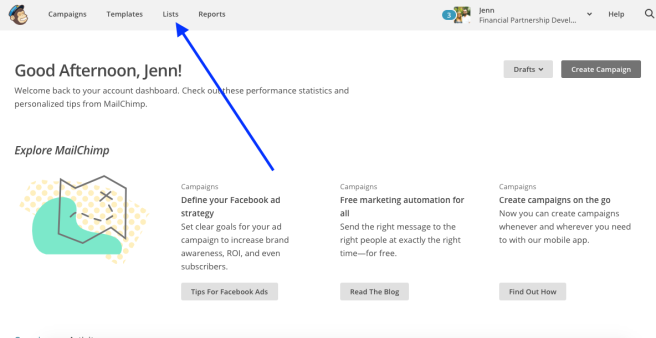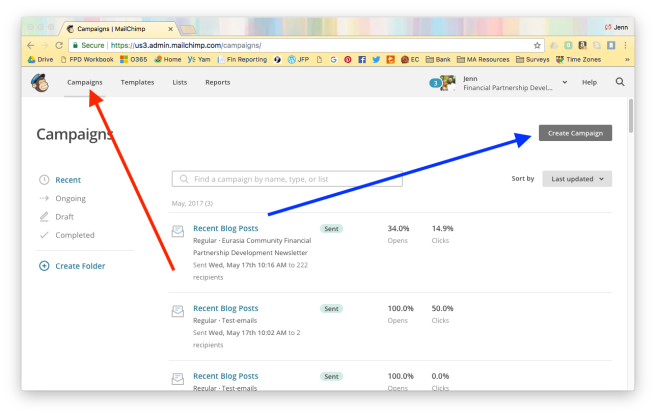Many of you in the middle of raising support may be wondering what to do during this unprecedented time. Today there are more school closings, limitations on gatherings of more than 10 people, more chaos at airports, overall social distancing, and the like. We don’t know yet how the coronavirus will affect ministry workers raising support. Dave Dickens of CRU recently offered some brilliant thoughts on his email newsletter list that I wanted to share with you at explaining some helpful things to help you navigate this chaotic season (some of it is slightly adapted to serve this blog’s audience):
-
- Let’s be prayerful. Pray for those affected by the pandemic, for ministry leaders who need to make tough decisions, for people’s financial situations, and for open hearts and gospel conversations as people are confronted with a broken world.
- Reach out to ministry partners to ask how this is affecting them. Create meaningful conversations (via text, phone calls, FaceTime, etc.) and have a ministry mindset when connecting. Send your partnership team texts, emails, or phone calls. Be ready to see your inbox fill up! If you have kids at home from school, maybe have the kids do artwork and write handwritten notes of appreciation and love to your team.
- Here’s a sample text reaching out: “I know we are all navigating uncertain times, and was thinking of you today. How are you doing, and how is the coronavirus affecting you? I’m taking some time to pray for you today. Let me know if there are specific things I can be praying for!”
- Send a coronavirus update prayer letter with specific prayer requests related to your assignment.
- Because everyone is social distancing and at home, over the next few weeks it may be easier to reach people, and people are definitely wanting to talk. People are more likely to be on social media as well. Think about ways to add value in those spaces and reach out.
Here are some thoughts to expound upon what Dave writes:
- Have you had a hard time staying organized? Are you caught up on thank you cards? This may be a good time to clean up your organization for financial partnership development. It also may be a good time to upgrade branding, overall materials, or if you don’t have an active presence on Facebook or other social media platforms to start.
- It probably goes without saying at this point, but meeting face-to-face in person will likely be off the table for a bit (at the very least for some people). Think of partners to reach out to via video appointments. It may be wise to change course of action and instead of reaching out to your “A” list, reach out to those who would be long distance appointments anyhow.
- It also may be a couple of weeks of relative pause on some people (maybe not all, but some) you were wanting to reach out to – that’s okay and understandable. That also doesn’t mean it’s time to do nothing. Pray, use discernment and common sense before asking for an appointment. If you have a coach, reach out to ask their thoughts on nuance situations – that’s what they are there for!
- Many churches are not able to congregate during this time, so if you do reach out to a pastor ask for prayer needs. If you are asking for support from the church, suggest possibly doing a window online with them (especially in checking up for a already scheduled service) and be creative. It also may be good to hold off on connecting with some churches for a few weeks while they think of how to shepherd their own flock during this time.
- One worker sent me an idea of scheduling a face to face via video conferencing, and going the extra mile to send that family some food or a snack and have it placed at their door for the appointment. Creative, thoughtful, and ministry minded!
I hope some of these thoughts at least get the wheels turning as to what to do for the next couple of weeks. It’s definitely not cut and dry. As Dave writes, “in the midst let’s keep our eyes on Jesus and remember His words: “Do not let your hearts be troubled and do not be afraid” (John 14:27 New International Version). Wisdom to be sure.
Also remember, ministry doesn’t start when you get into your full time assignment, it starts now! Ask God how you can serve those around you during this season.
What are your thoughts or questions during this interesting season?





 B. After clicking on Lists, click “Create List”.
B. After clicking on Lists, click “Create List”. C. Fill in the List’s name, what email address you’ll be sending this from, your name, and other information needed.
C. Fill in the List’s name, what email address you’ll be sending this from, your name, and other information needed. ** If you do choose to import your contact list typically you’d either do so by .csv files (this is good if you keep your contacts organized on your computer using a program such as “Contacts” for Macs or “Address Book” for PCs) or by copy and pasting from a file (for instance from Excel). Either way you may have some cleaning up of your files to do, so be patient!
** If you do choose to import your contact list typically you’d either do so by .csv files (this is good if you keep your contacts organized on your computer using a program such as “Contacts” for Macs or “Address Book” for PCs) or by copy and pasting from a file (for instance from Excel). Either way you may have some cleaning up of your files to do, so be patient!  E. When you are done importing or manually adding the subscribers to your List, you are ready to move onto Creating Your Campaign!
E. When you are done importing or manually adding the subscribers to your List, you are ready to move onto Creating Your Campaign!
 C. Choose “Regular” for your email type. Choose a campaign name, then click “Next” at the bottom right of your screen.
C. Choose “Regular” for your email type. Choose a campaign name, then click “Next” at the bottom right of your screen. F. Now it’s time to select a Template. There are a lot of pre-made templates out there that are great! If you’d like to go the easy route click “Themes” and explore until you find one that works for you. If you want to choose a Layout and build the template yourself go for it! Simply click “Layout” and choose the one that works best for you. You’ll spend some time custom making your Template by choosing design and content elements. (Mailchimp also has a couple of helpful links in the Layout feature that will help you get started).
F. Now it’s time to select a Template. There are a lot of pre-made templates out there that are great! If you’d like to go the easy route click “Themes” and explore until you find one that works for you. If you want to choose a Layout and build the template yourself go for it! Simply click “Layout” and choose the one that works best for you. You’ll spend some time custom making your Template by choosing design and content elements. (Mailchimp also has a couple of helpful links in the Layout feature that will help you get started).  G. Now that you’ve chosen and designed your Template, it’s time to actually put together your newsletter. When you create your newsletter, you can choose to add some of the elements on the left side as you wish (such as additional text, images, graphs, etc.). To do so simply drag and drop where you want the element to the right side of your screen onto your existing Template.
G. Now that you’ve chosen and designed your Template, it’s time to actually put together your newsletter. When you create your newsletter, you can choose to add some of the elements on the left side as you wish (such as additional text, images, graphs, etc.). To do so simply drag and drop where you want the element to the right side of your screen onto your existing Template. H. When you are done creating your newsletter and carefully writing your text, I recommend previewing your Campaign and sending a test email to yourself first – so you can make 100% sure your e-newsletter is awesome!
H. When you are done creating your newsletter and carefully writing your text, I recommend previewing your Campaign and sending a test email to yourself first – so you can make 100% sure your e-newsletter is awesome! Step 5: Send Your Campaign and Your DONE!
Step 5: Send Your Campaign and Your DONE! 




